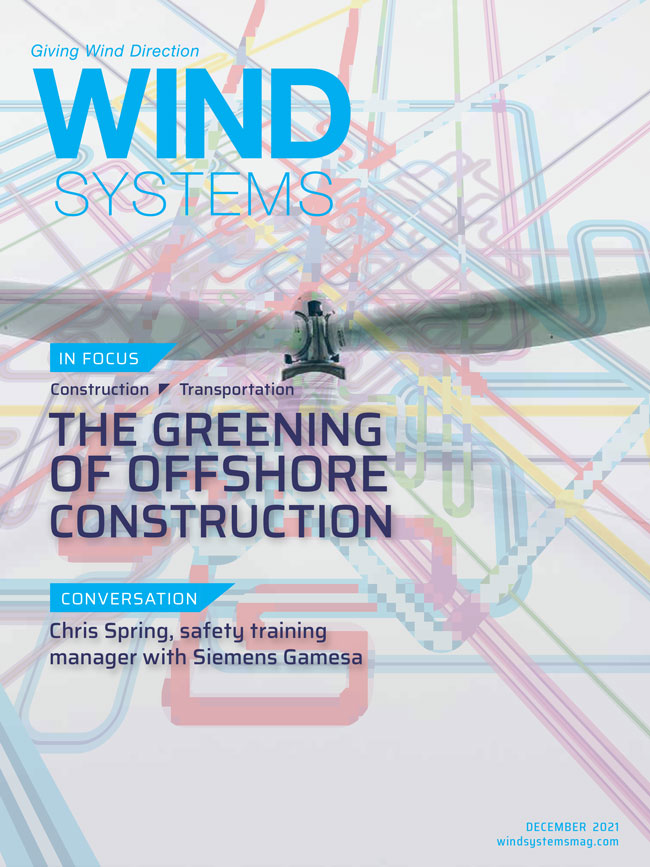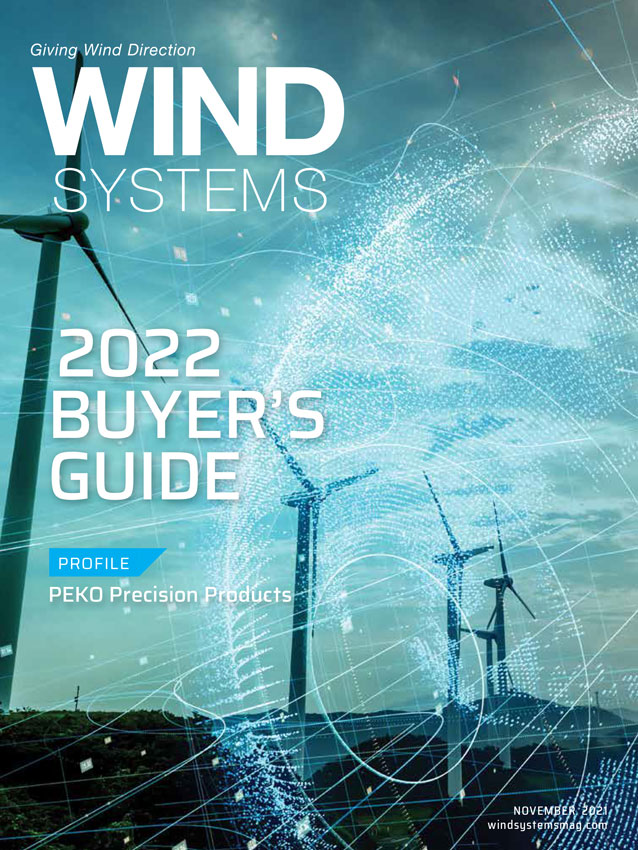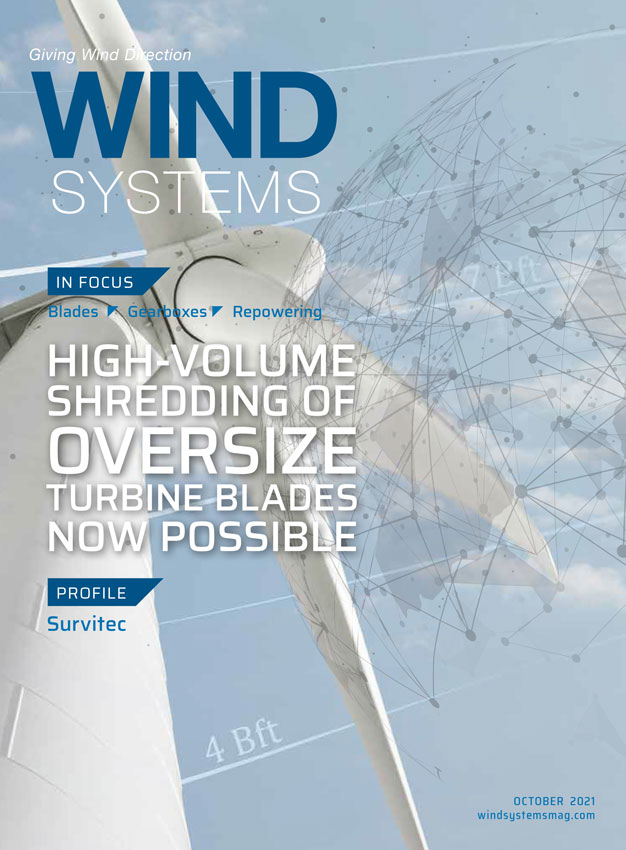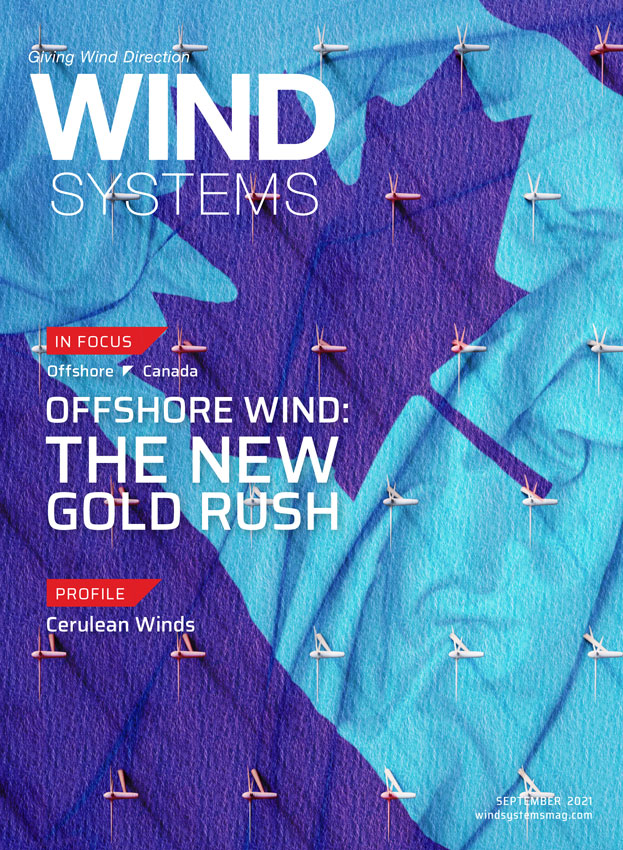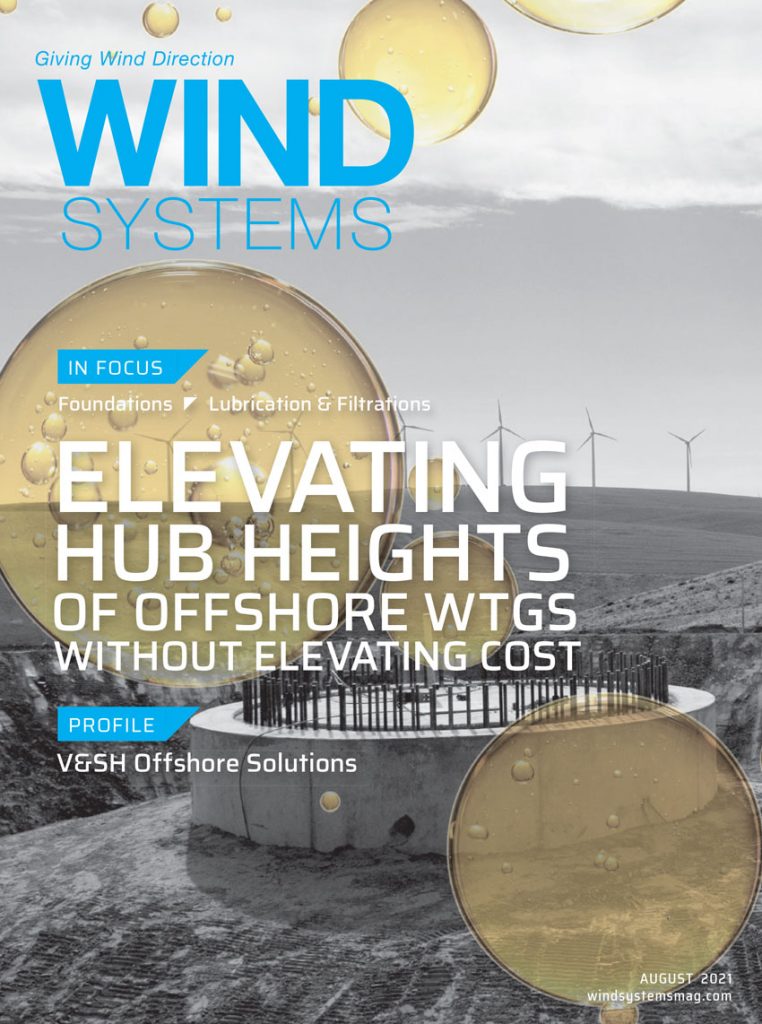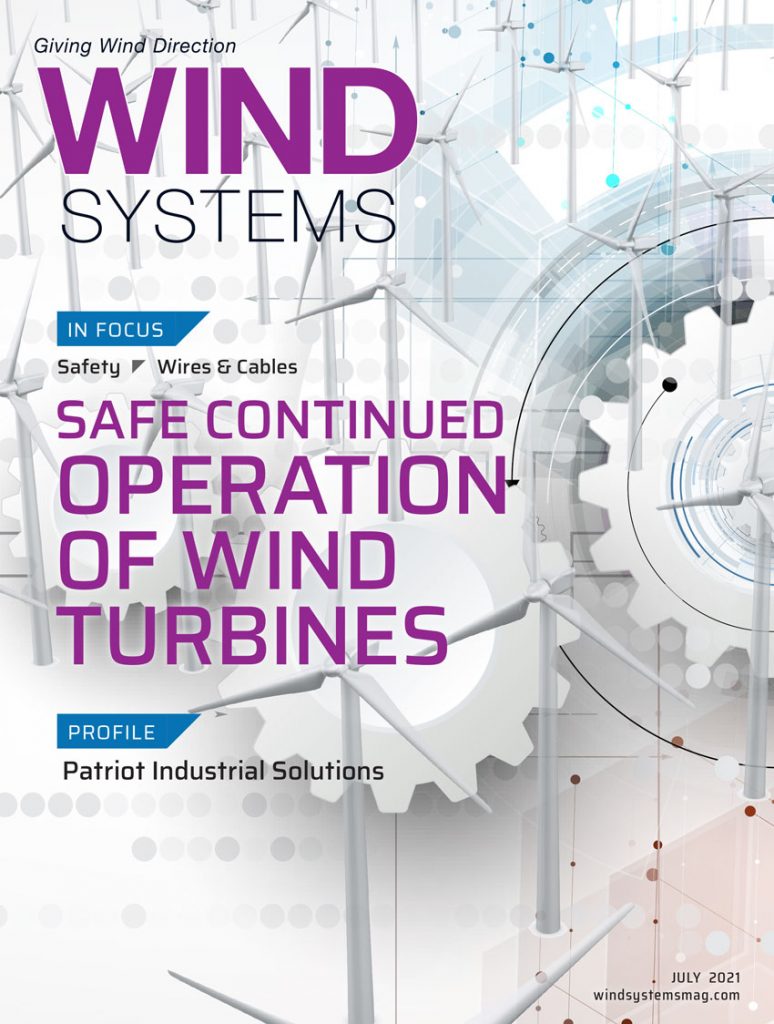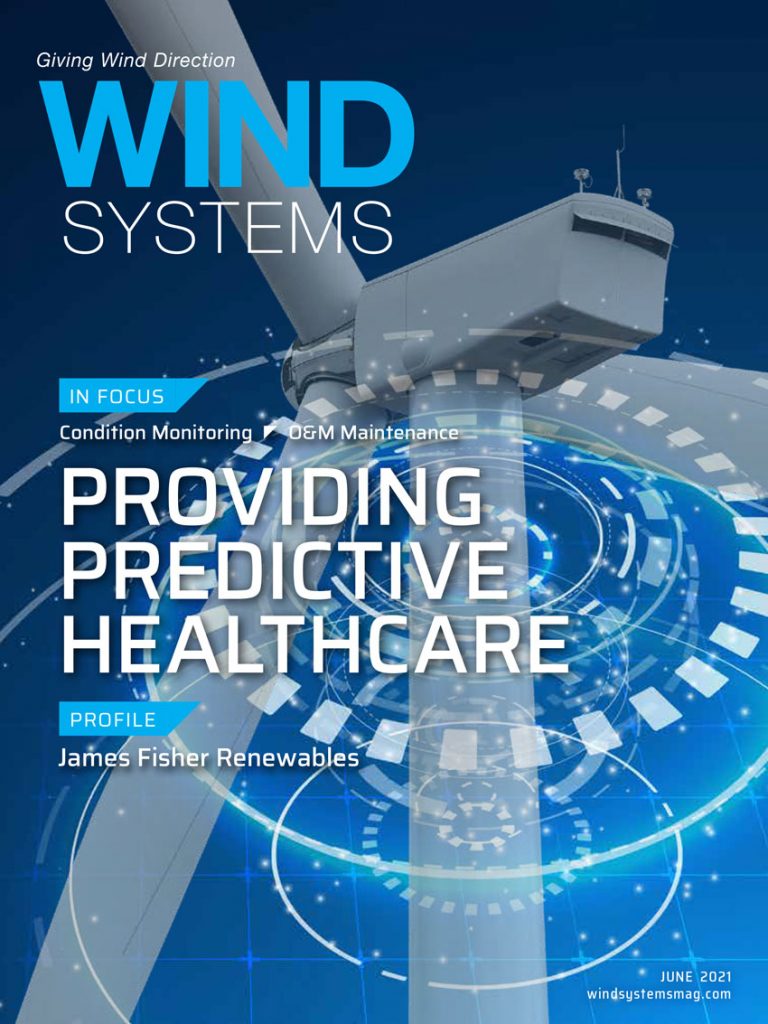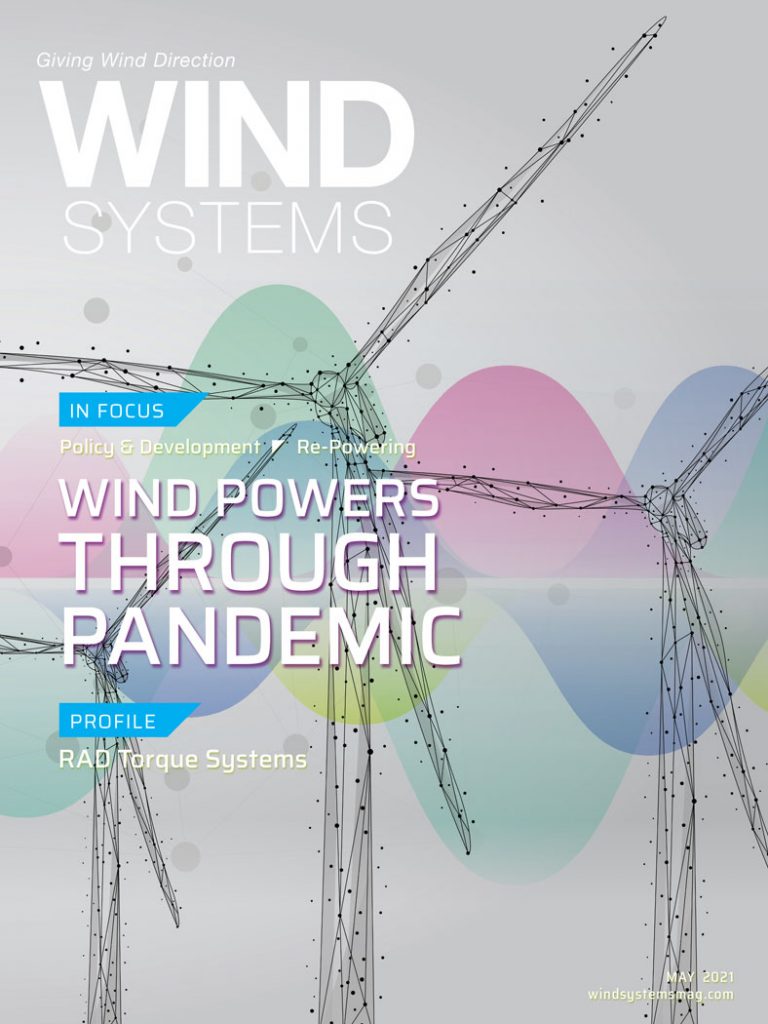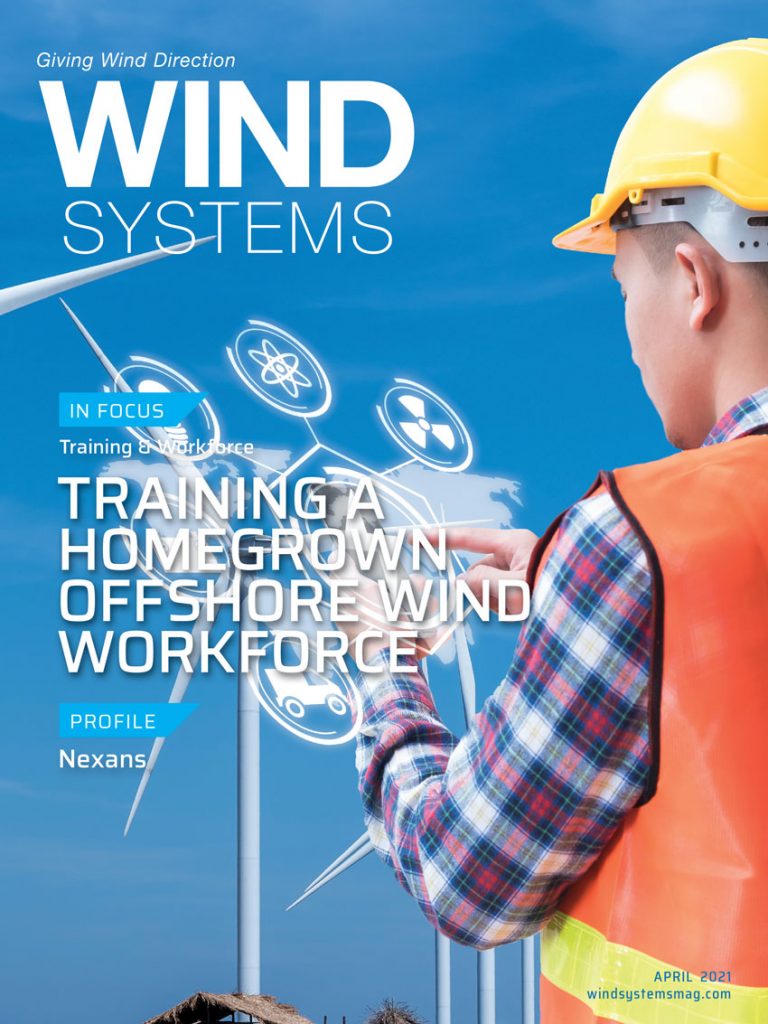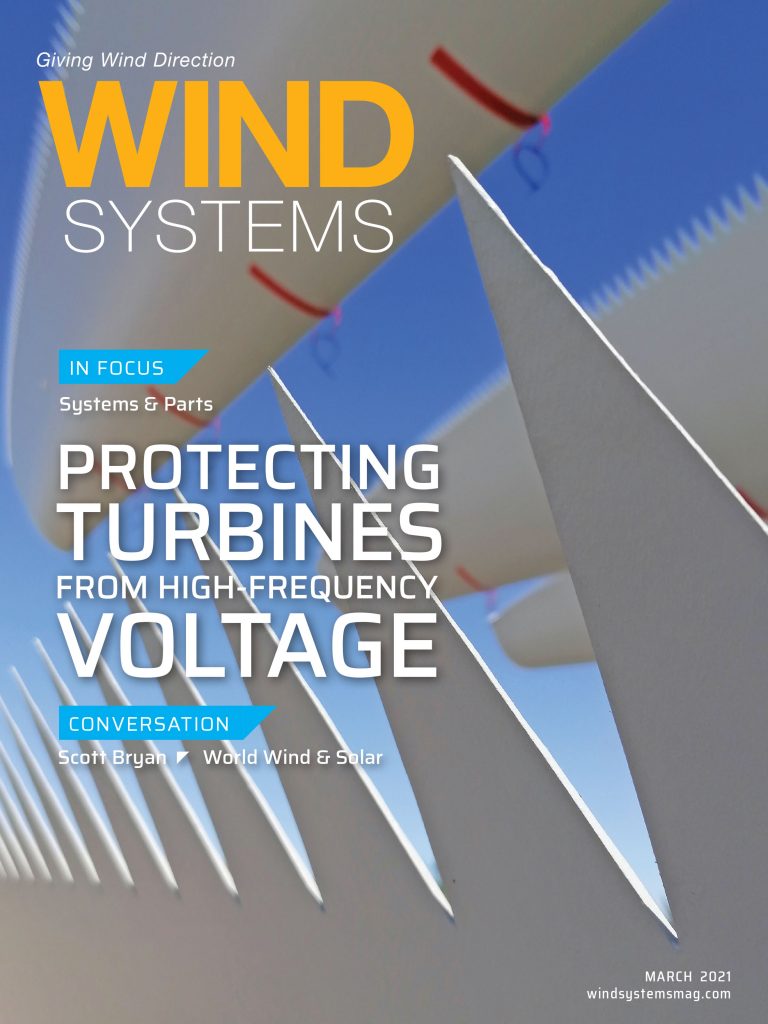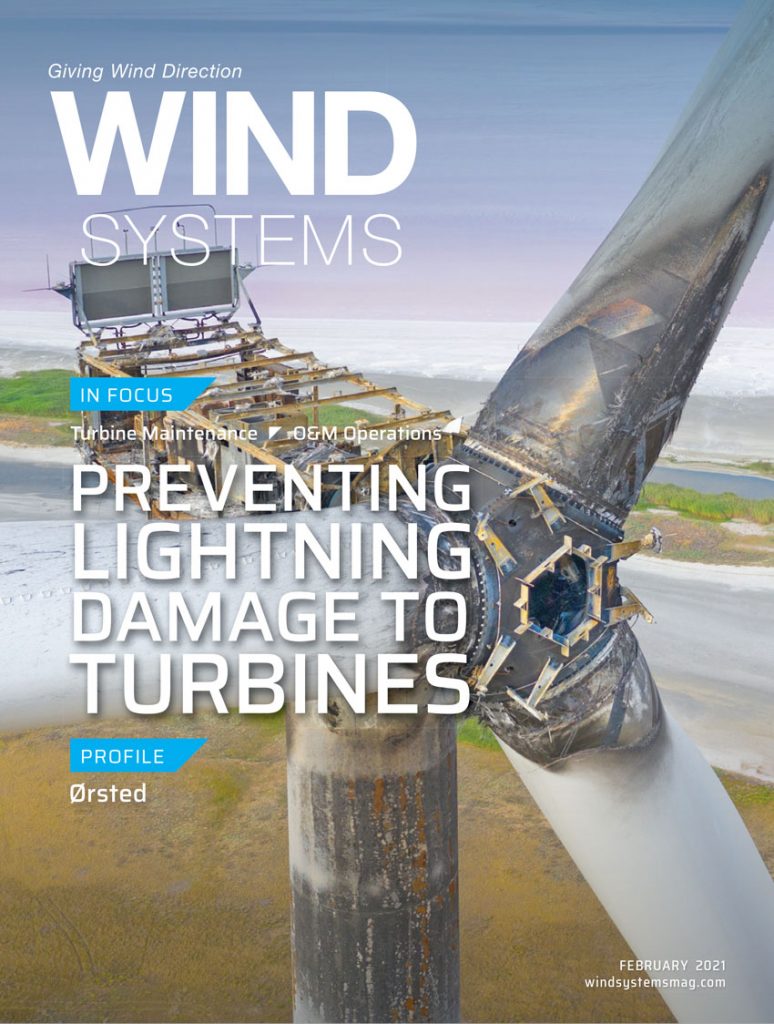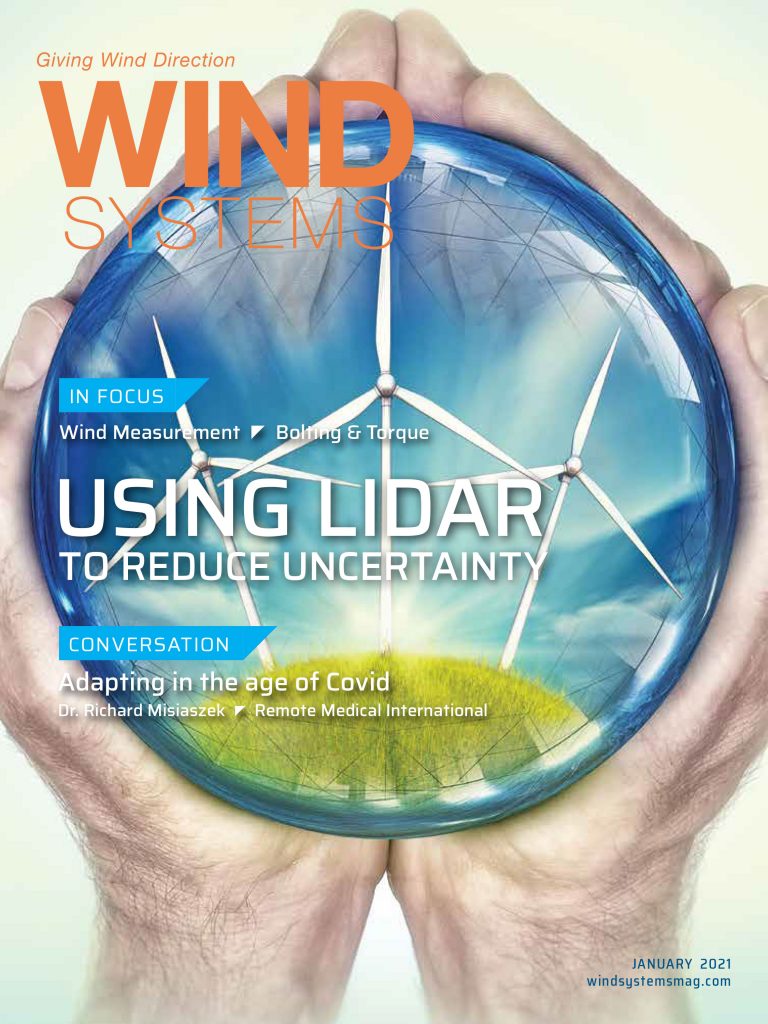We are currently updating our archive. Please check back shortly.
December 2021
The greening of offshore wind-farm construction
To help achieve carbon neutrality by 2050, materials and construction processes used in offshore wind-turbine-generator structural platforms should be reevaluated in order to reduce carbon emissions as well as costs.
Why technology matters for the wind industry
Embracing the potential of digital management systems for offshore energy support vessels.
Case study: Wind farm built despite challenges
Extreme weather conditions in rural Illinois force Boldt to build Lone Tree Wind Farm’s wind towers at night.
October 2021
Keeping up with market needs
How wind-energy providers can scale their operations to keep pace with growing demand.
Formulating load-sharing behavior in epicyclic gears for wind turbines
This article validates an analytical model for estimating load sharing of three-planet epicyclic gear sets that has been reformulated for wind-turbine gearboxes to consider the effects of gravity related to carrier-bearing clearance and moments from the rotor.
High-volume shredding of oversize turbine blades now possible
Cost-effective, innovative shredder designs eliminate catastrophic breakdowns, production downtime by upgrading points of vulnerability and enabling simultaneous shredding and chipping.
September 2021
Canada’s energy future looks bright
As Canada preps for a zero-carbon future, cost-competitive technologies will serve to address new demands and emerging opportunities.
Floating wind developers: It’s time to think smarter
Implementing designs that address improvements to the turbines, platforms, and mooring systems will lead to increased effectiveness and longevity, which allows for less maintenance — meaning less risk and greater safety for the workers maintaining and repairing them.
Offshore Wind: The new gold rush
A variety of factors are making the offshore wind industry a strong candidate for growth, but market dynamics are creating uncertainty; while traditional players are pursuing aggressive growth strategies, new entrants are reshaping the landscape.
August 2021
Automating wind-turbine lubrication for sustainability
With more demands on lubricants and the importance of the function they provide, it is clear newer technologies will be needed to secure their continuous quality.
Elevating hub heights of offshore WTGs without elevating cost
The new advanced direct drive wind turbine generators require strong winds to turn their large blades. Larger, stronger towers are necessary to reach the higher elevations where the wind blows consistently.
July 2021
Technology, infrastructure key to U.S. offshore success
Offshore wind is vital to President Biden’s pledge to reduce carbon emissions in the U.S., but challenges such as LCOE decreases, supply chain issues, protracted regulatory approvals, and the continued need for investment to upgrade the onshore transmission network remain.
Turbines and fire risk
As more and more wind turbines are being built, dealing
with the possibility of a turbine fire should be an important step for the wind-farm owner-operator.
Safe continued operation of wind turbines
After 20 years, most wind-energy converters (WEC) reach the end of their design life. Where subsequent repowering is not an option, operators must assess whether continued operation may be a viable alternative to dismantling.
June 2021
The need for met-tower maintenance
Met-tower maintenance is an important part of an owner-operator’s fiscal budget and helps ensure every wind farm has an optimally functioning met tower.
Drones can make inspections safer
Traditional offshore wind-turbine inspections come with significant risks for workplace accidents; however, the use of drone technology can change that by offering long-term cost benefits and improved efficiency.
Providing predictive healthcare
A day in the life of a diagnostic service provider for wind turbines.
May 2021
Expanded U.S. wind-energy capacity
Researchers conduct study to determine the impact of wind-energy capacity on the efficiency of electrical-power production and surface climate.
The United States’ far offshore wind-turbine challenge
Our carbon-neutral future requires clean renewable energy, and the time is now for the U.S. to develop a new generation of systems necessary to harness the sustained winds found far out at sea.
Wind powers through pandemic
Despite disruptions imposed by COVID-19, the wind industry saw a record year of development in 2020, and 2021 and beyond looks to be even more robust as offshore wind begins to take off in the U.S.
April 2021
U.S. offshore wind primed for growth
As wind energy in the U.S. moves offshore, the industry should take note of lessons from the U.K. on preparing and training for health and safety.
Training a homegrown offshore wind workforce
The inaugural class of recruits in Centura College’s first-of-its-kind turbine technician program is learning the tools, terminology, and climbing skills that will be essential for maintaining wind farms.
March 2021
Protecting turbines from high-frequency voltage
High-frequency voltage can be destructive to a turbine’s bearings, but technology exists to properly ground it before it can inflict any damage.
Applications of magnets in wind turbines
Magnets are being used to lower costs, improve reliability, and increase maintenance intervals in many wind farms around the world.
Wind turbine control methods
Exploring the fundamental concepts and control methods/techniques
for wind-turbine control systems.
February 2021
Preventing lightning damage to turbines
Even though there have been many technical advances that aid in reducing lightning damage to wind assets, the bottom line is continued maintenance is the only real way owner-operators can protect their investment.
By Allen Hall
Reducing Costs from the Ground Down
A new type of wind-tower foundation could provide construction cost savings while having the benefit of performing longer.
The Importance of being Proactive
Improving wind-energy production through videoscope inspections of wind turbines.
January 2021
Detecting loosened bolts on offshore wind turbines
In the normal operation of an offshore wind turbine, bolts can loosen due to long-term operation and exposure to vibration; however, a proposed device could help detect loosened bolts before extensive damage can occur.
By Wang Fei and Qu Jun
Maintenance-Free-Bolting concept for bolts up to M80 (3 1/8”)
ITH Bolting Technology combines digital bolting tool procedures, advanced fastener design, and installation know-how to reduce maintenance costs significantly – proven for onshore and offshore wind-turbine installation projects.
Using Lidar to reduce uncertainty in offshore wind development
With offshore wind development accelerating globally, Lidar is reducing uncertainties and meeting many previously unmet needs for offshore developers and operators throughout each stage of a project.
















